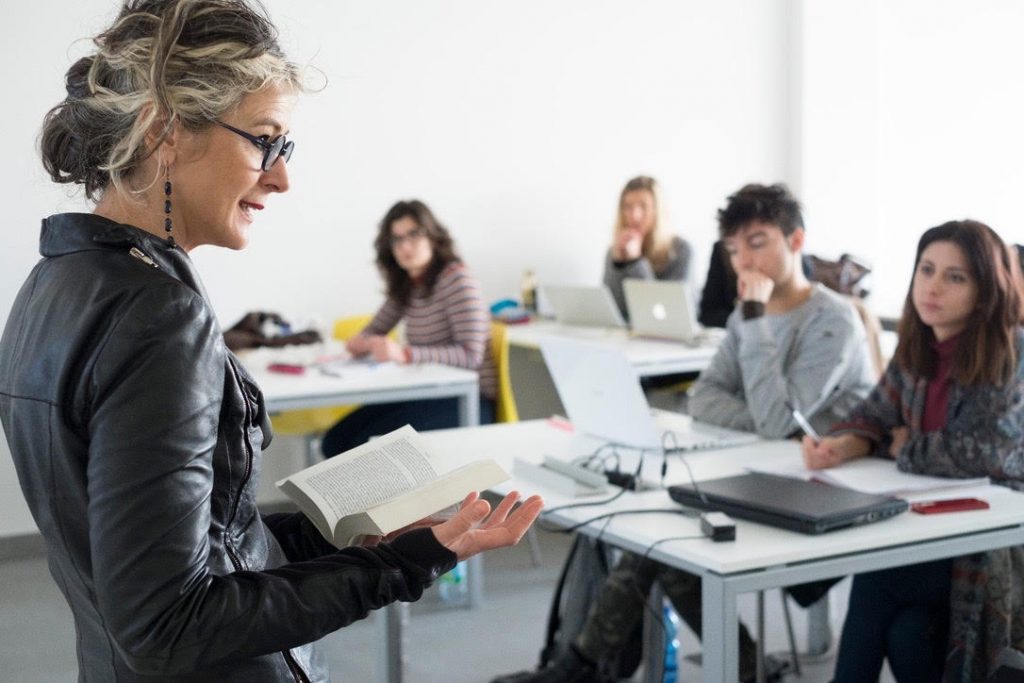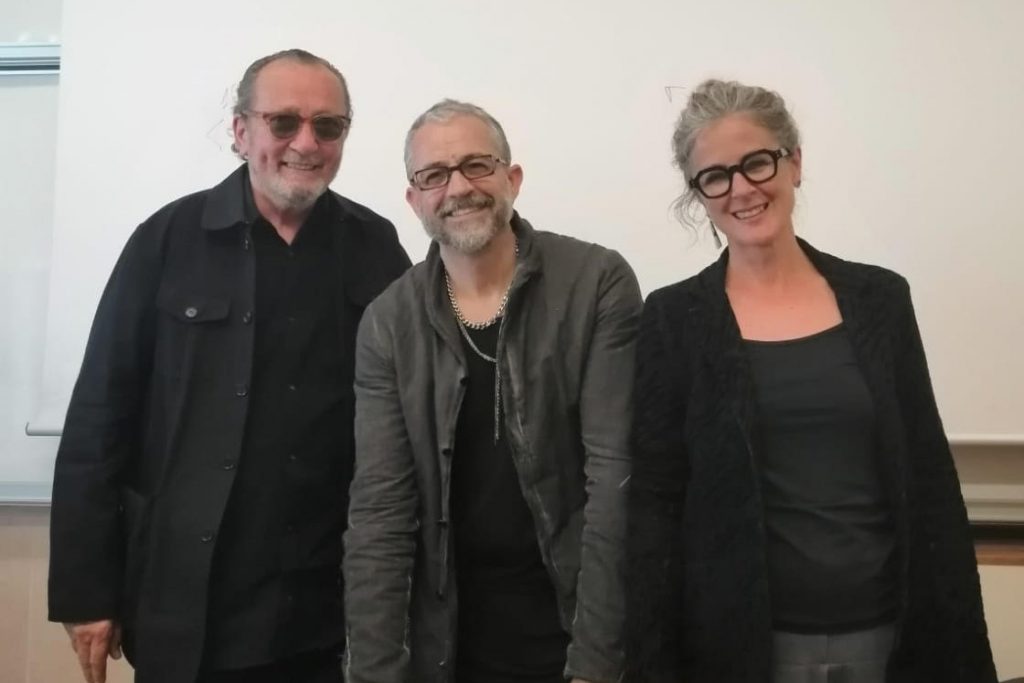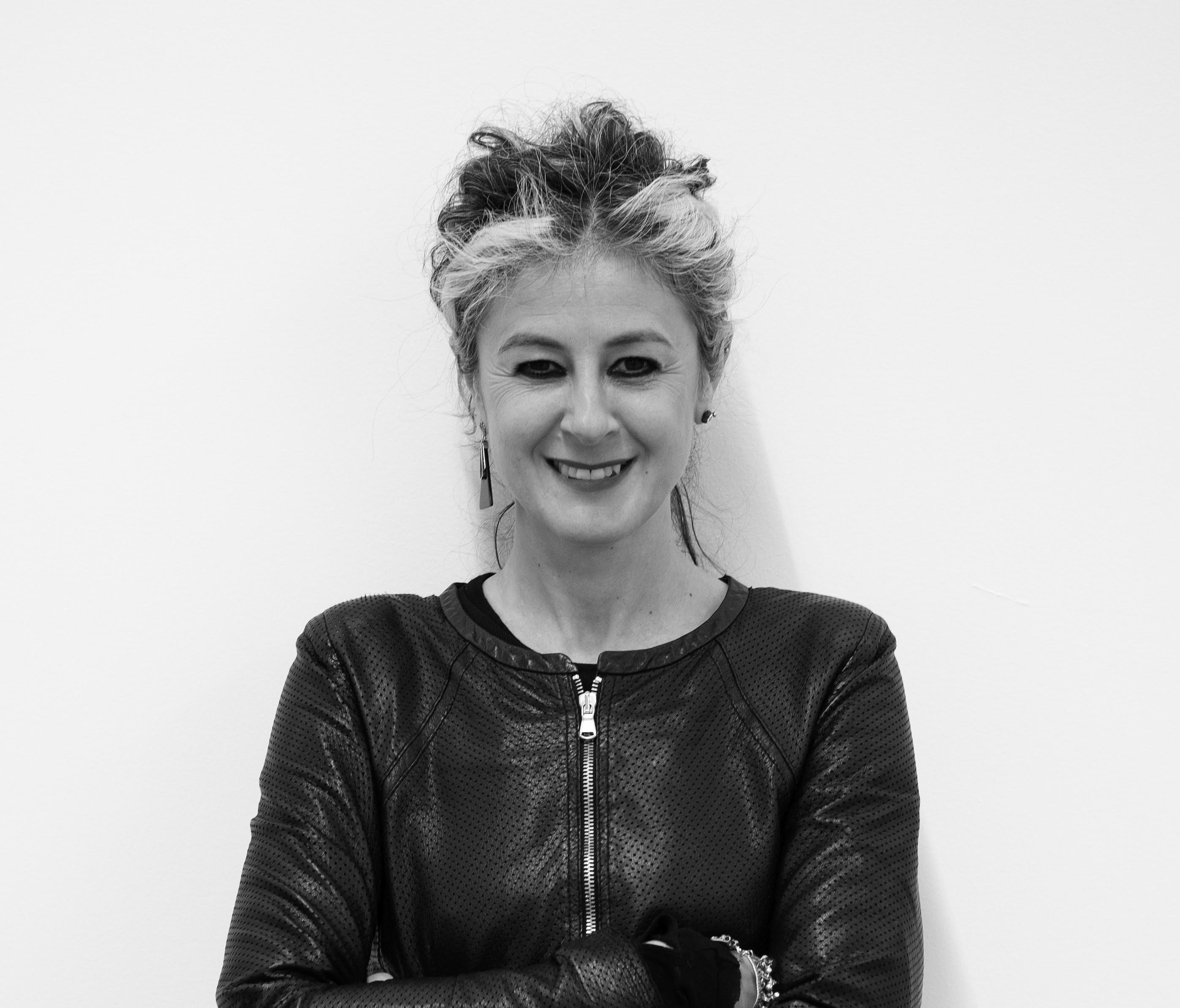FEDERICA MUZZARELLI
Generazione Critica: You are the coordinator of the research center “Fotografia, arte e femminismo. Storia e pratiche di resistenza nella cultura visiva contemporanea” (Photography, art, feminism: history, theory and practices of resistance in the contemporary visual culture). How did this project originate, and how does it fit into the University of Bologna’s educational program? How does an academic project manage to establish a close and effective collaboration with militant criticism and with current artistic research, in other words, with the artists?
Federica Muzzarelli: As often happens, everything began with human elective affinities, shared with colleagues and scholars. We found each other realizing that we were interested in common themes. I am specifically referring to Raffaella Perna, Cristina Casero, and Lara Conte. They are colleagues working at Sapienza University of Rome, the University of Parma, and Roma Tre University, respectively.
Within the academic context, there are many women like us, and I use the feminine because traditionally women have been the ones dealing with this topic. After all, the interest in certain issues is often driven by personal experiences and encounters in real life, not only by intellectual curiosity.
Although this project was born from a collective of women, it must be said with great pride and satisfaction that it receives significant interest from male colleagues and young men in academic and university environment. This is a positive aspect and a sign of significant change. In the ’80s and ’90s, the study of gender equality issues was primarily a world of women. I hope that our reality could be a preview of the near future where declaring oneself a feminist, as a man, will no longer be an exceptional thing.
Returning to the research group, the names I mentioned before are just a few compared to all the entire Italian panorama. I think about the work and studies of Laura Iamurri, Elena Di Raddo, and Carla Subrizi, just to name some.
When my colleagues and I started planning the research center called “Fotografia, arte e femminismo”, a joint project between our universities on the themes of art and feminist photography, there was the lucky coincidence that the open calls for PRIN projects were released at the same time. These calls were issued by the Ministry to finance university research activities of national interest; this last part is not indifferent because it implies that the project should also have a social impact. Typically, in our disciplinary field, other types of projects, more traditional in approach and method, win. However this time, probably surprising many colleagues, we won this national project, which is also one of the very few dedicated to contemporary art.
This project, which started in May 2022 and will finish in three years, will have several outcomes, all of that aiming to bring together the subject of our research: the history of women in Italian photography, from the inception of this medium to the 1980s. We pose the following questions: in Italy, have public and private institutions valued women photographers? Have magazines talked about them? Have museums exhibited their artworks? Have collectors acquired their art?
The best part is that young doctoral students, researchers, and scholars, both females and males, are working on it. It will continue until May 2025, and I believe it is a very important opportunity.
Regarding the militant criticism point, currently it is not included in my main occupation. However, I think about younger colleagues, such as Raffaella Perna, who manages to research and actively being engage in the curatorship and critical activities. I believe in the principle of communicating vessels: it is challenging for everyone to do everything, instead, it is better that each person focuses on their own work because there are various professional nuances. In my opinion, the more these sectors are permeable and interconnected, the better it is for Italian contemporary art.
GC: Making a brutal numerical reference, the Museum of Contemporary Photography in Cinisello Balsamo, which accomodates one of the most significant and extensive Italian archives dedicated to post-war Italian photography, has 1280 authors in its collection, of which only 192 are women. How do you interpret this trend, which besides being a minority, seems almost to be defined as elitist: a matter of education, profession, or power?
FM: Among the project partners, who were therefore accredited at the time of application, there are very important Italian institutions such as MUFOCO (Museum of Contemporary Photography), CSAC (The Study Centre and Communication Archive), and Archivia, and as the project progresses, we are involving many others. I believe that the foreign perspective – the most commendatory reviews of the project have come from foreign colleagues – has highlighted the idea of a situation that has not yet been studied or thoroughly explored in our country, and that’s why its necessity has been perceived even from abroad. Works and exhibitions of this kind have already been done on an international level; just think of Germany, France, and, of course, the United States.
So, the answer to your question is yes, and this is undoubtedly the result of social, political, and cultural contexts, as well as the presence or absence of networks capable of welcoming and giving space and voice to the relevant communities. The project aims to do just that, to consider the vast photographic archives of institutions like MUFOCO and CSAC and demonstrate that they are just a part of the entire production of Italian women photographers, whose process of valorization and historicization we want to follow and narrate. We understand there are significant collections focusing on the work of women, and it is in that direction that we would like to move.
To know and understand first and foremost, to get an overall idea of the work of Italian women photographers, and then formulate a serene and balanced judgment. Let’s remember that we are talking about a history of Italian photography that has practically ignored women almost entirely.
I think about the significant work done by Luce Lebart and Marie Robert in “A World History of Women Photographers”: it is true that such projects always have some flaws as they cannot be truly universal and exhaustive, but it is noteworthy that there are only five Italian women photographers included. Moreover, I was the only Italian scholar invited to contribute with short essays, when in the specific Italian context, there are other colleagues who are more experienced. The reason? I think it’s important to say: it’s because of the language. We have very refined scholarly works, but unfortunately, we are marginalized by the language barrier; our works are not translated, and consequently, our original ideas do not go beyond the national borders. My luck was that “Il corpo e l’azione” was translated into French, but it shouldn’t be like this. Ideally, among experts in a field of research, there should be a general overview of who is working on what. However, I feel optimistic about this, in the sense that, compared to my generation, the young people I meet write and publish in international journals and editorial series much more than it used to happen years ago, and this bodes well for the future.

Lezione al Master in Technology for Fashion Communication, Fondazione Fashion Research Italy, Bologna 2016 (Photo by Margherita Cecchini) ©
GC: Today the word ‘feminism’ has evolved meanings compared to a definition, usage, and perception in the common sentiment as well as in language. If in the 1970s and 1980s, militant feminism, characterized by protest and collective action, was dominant, art, and especially photography, have been seen, studied, and practiced as spaces of personal freedom, first and foremost. They have been regarded as means of expression and, later, of emancipation.
In an intersectional perspective, how is feminism practiced today? Who are the scholars of reference in the Italian and international debates?
FM: Among the many scholars who currently focus on photography from a gender perspective, I feel compelled to mention one scholar for whom I have a special preference. She is an aesthetics scholar, a philosopher with remarkable interdisciplinary capabilities in her interests and the ability to develop her arguments. I’m referring to Claire Raymond, who wrote an essay a few years ago titled “Women Photographers and Feminist Aesthetics”. In this essay, I appreciate what I have also tried to apply, which is an idea of feminism manifested in the work of women photographers that goes beyond personal awareness – especially when we talk about the pioneers of the late nineteenth and early twentieth centuries. For them, feminism meant the enhancement of a way of presenting and expressing themselves through photography, even beyond direct activism. Every time one doesn’t feel part of the mainstream, every time social impositions, uncomfortable dogmas, existential or professional marginalization are being denounced and narrated through photographic work, that’s when one is experiencing a feminist dimension. Claire Raymond uses this expression, which I find very effective, ‘advocate feminism’ – meaning to defend and support feminism.
In Italy, between the late nineteenth and early twentieth centuries, merely being a female photographer was a form of feminism. Then, it became a form of feminism to succeed and emerge – we’re talking about cases like Wanda and Marion Wulz, Rosa Rosà – instances of emancipation, a proud participation in social life. Afterward, in the post-war period, it also became a militant cause, a radical and conscious participation. However, I must admit that I find those situations of unconsciousness fascinating, doing something because one feels it, a kind of existential need.
I am finishing a text entitled “Photography and Feminism”, which refers to the historical period at the center of my research, namely the late nineteenth and early twentieth centuries, focusing on the productions that intertwine photography, writings, and painting in the form of family albums. This object has always been considered a second-rate literature because it is a typical women production. It is precisely the family albums, autobiographical and photographic diaries that have been a fascinating vehicle for feminism precisely because they were kept on the fringes of sophisticated and public culture.
GC: Your research field also involves the study and analysis of the relationship between photography and visual arts in fashion communication. Over the past few years, there has been a growing interest in what is more or less appropriately called the ‘female gaze’. There are examples of significant fashion houses and luxury brands dedicating resources, not only financially but also by structuring research spaces and collaborative actions with women artists, particularly female photographers.
How do you interpret this trend both in terms of studies – that is, research areas outside the academic context – and in terms of actions, employment, and a much higher availability of resources compared to the artistic context, including museums.
FM: From the very beginning, my research interest was centered around women photographers. When I joined the university in 2006, I obtained a position at the Rimini Campus, where the University of Bologna had already initiated educational projects focusing on fashion culture since the late 1990s. Thus, it can be said that fashion almost forcefully became an area of interest in my teaching and research. Initially, I was somewhat skeptical about the idea of the emblematic world of luxury, such as fashion, becoming a subject of study at the university level. However, Fashion Studies have been well-established worldwide for a long time, and it was paradoxical that in Italy, with a history of Made in Italy that everyone envies, there were very few examples of degree courses dedicated to the various professions demanded by this key sector of our industry and culture.
On a personal level, the culture of fashion became an interesting field for me primarily for two reasons: first, the history of fashion photography is a fascinating chapter, not only due to the great authors who shaped its history but also as a means of communication and construction of social imaginaries. Second, its richness in terms of identity implications allowed me to combine it with my solid interests in gender studies. Even today, I teach in Rimini (as well as in Bologna) and, in addition to the history of fashion photography, I extensively discuss gender issues addressed through photography in fashion. I think of how Claude Cahun has been an inspirational model for Maria Grazia Chiuri; I think of how Annemarie Schwarzenbach inspired Antonio Marras, and more. What cannot be overlooked is that fashion is a language that can reach everyone. A simple example is that many young people might not have studied or encountered figures like Claude Cahun, Annemarie Schwarzenbach, or Frida Kahlo in their lives. While it may appear that turning Frida Kahlo into merchandising reduces her work to a stereotypical banality, we must accept the idea that fashion can reach places where art, unfortunately, often cannot. So, I believe that if fashion can, in certain virtuous cases, advance ideas and convey messages like those of feminist demands – as exemplified by Maria Grazia Chiuri – then it performs a very important role for everyone, beyond merely pursuing its legitimate business.

Conferenza di Paolo Roversi (con Fabriano Fabbri), Corsi di Laurea sulla Moda, Campus di Rimini, Università di Bologna, 2023 (Photo by Mariella Lorusso) ©
GC: What study paths can a young student envision to delve into these types of topics? Do you have any advice regarding educational career paths? How can two institutions that run parallel for this type of work, such as universities and academies, effectively interact without opposing each other? For example, in Bologna, there is a very strong University, but at the same time, there is also a significant Academy of Fine Arts. What are the best paths to ensure promising career prospects overall?
FM: First, I start with something that we didn’t have when we were students, which is university websites that provide comprehensive information about what universities offer (I am referring to Bologna, although I know it may not be the same throughout Italy). These websites are clear and display the entire study programs, the faculty members and their areas of expertise, course syllabi, bibliographic references, lecture content – really everything. So, the best advice I can give, which may seem obvious, but I assure you it is not, is not to settle for summary information and to take advantage of the opportunity to verify everything in a very thorough and clear manner.
Another tool that we didn’t have is the initiative for high schools called Alma Orienta, which is a great effort by our university to explain the educational offerings of all the Departments. Furthermore, you can now attend lectures via Teams or physically go inside the classrooms.
Of course, if one is interested in the Arts and creativity in general, DAMS remains a point of reference. Today, there are many DAMS programs in Italy, but the one in Bologna has notoriously been the first and continues to be one of the most representative, although there are others that are also very good. After the three-year bachelor’s degree, like the one offered by DAMS, students can enroll in a master’s degree program, which represents a phase of specialization in knowledge and skills. Of course, if one has the opportunity, they can explore studying abroad where there are departments dedicated to Gender Studies, but in Italy as well, there are excellent master’s programs that include international paths, entirely taught in English. So, opportunities for internationalization are not lacking.
Moreover, it’s clear that if someone has the capability, interest, and ambition, they can apply for doctoral positions to begin an academic career and make research a key aspect of their future profession.
Regarding the Academy, I would like to be able to collaborate much more with my colleagues who work there. We have collaborated in some activities that involve both university and academy students: I remember a great project in which art pieces created by academy students were exhibited in an exhibition curated by university students. Certainly, there are academy colleagues who have teaching contracts at the university but, if possible, we should and could do much more in terms of sharing and collaboration. However, I must say that it’s not a matter of willingness; it’s simply a matter of time, resources, and human efforts. The final goal would be to reintegrate and restore that special artistic and cultural context that existed in Bologna in the ’70s and ’80s, envied throughout Italy and beyond. We will do our part to achieve that.

